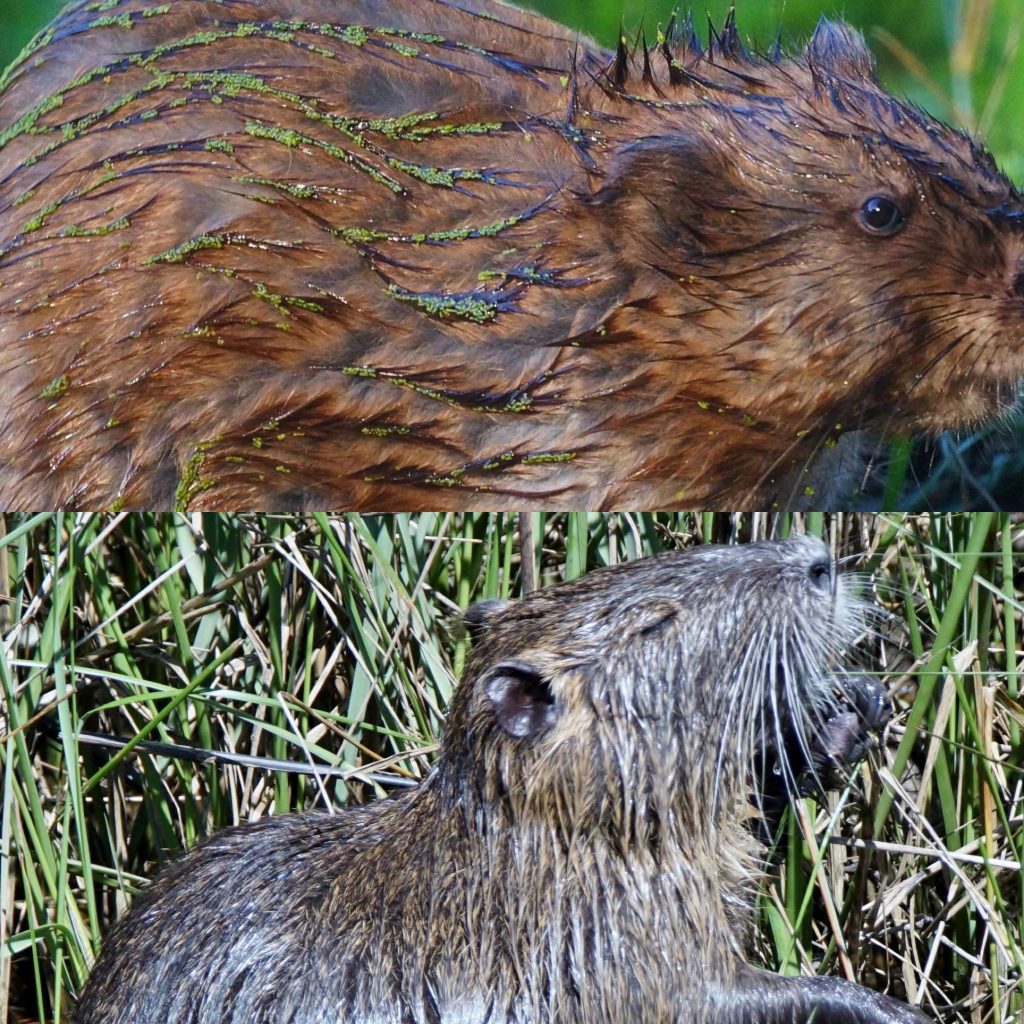Yes, Virginia, a rodent can be cute! Such is the case with our native muskrat, a semiaquatic mammal inhabiting coastal and freshwater marshes across much of North America. Our history with this animal has run the gambit of being an important source of food and fur to being a pest in agricultural areas. Sound familiar? We, humans, are fickle that way.
In any case, this cute creature is actually not a rat but gets that name because of its resemblance to them and their lifestyle. The term, “rat,” is a general term for rodents with an omnivorous diet, a mixture of plant and animal sources. The “musk” part of the name is based on the gland that produces the foul odor that it uses to mark territory.
Of course, appearance is in the eye of the beholder. However, it is important to distinguish muskrats from two other “rat-like” mammals that live in similar habitats: the American beaver and nutria. Muskrats are the smaller of the three, followed by nutria and beaver, each being as much as twice as large as the other in that order. But size is not helpful for identification when seeing only one at a time, so other characteristics can be used to distinguish them from one another.
Muskrats have dense undercoats of fur with long glossy guard hairs that give them a fuzzy look. Their heads are moderate in size with black whiskers, while their tails are long and round but slightly flattened vertically, aiding in swimming. Their tails are also covered in scales, not hair like nutrias. Nutrias, on the other hand, have a more even coat of hair, a more squarish head with white whiskers, and a round, hair-covered tail. Beavers have reddish to black fur with a wide, flat tail. All three can have colored front teeth (incisors) with muskrats’ being more yellow than the orange teeth of the other two species.

In our coastal areas, we are more likely to encounter a nutria than a muskrat, largely because of the aggressive nature of the nutria that appears to be outcompeting muskrats for food and space. Muskrats are also a bit shy and thus not as easily detected. One good sign of a muskrat’s presence is the dome-shaped huts they build with marsh grass. Nutrias burrow into banks and levees. (See “Nutria – An Unwelcomed Invader”)
As with many of my stories, this one has a bright and a dark side. Although muskrats are not as common as they use to be, because of both human activities and nutrias, they are still here. As with many plants and animals that the scientific community regards as rare, that designation is in large part because few of us are actively looking and the rest of us may simply not know what we are looking at.
The emergence of online nature identification and reporting apps like iNaturalist has changed this situation drastically, which is part of the bright side. The key is knowing what you might be looking at, getting a good photo of the creature or its hut, in this case, and reporting it.
Now, you know the difference between the semi-aquatic mammals that you may be seeing on your nature adventures. Look again at what you might think is just another nutria and help us discover just how many muskrats are around. Your bonus is that muskrats are so much cuter!
Hope to see you in our great outdoors!